|
|
|
Trauma symptom checklist 40 interpretation
Trauma symptom checklist 40 interpretation
The descriptions review their intended The TSI is intended to capture a broad array of trauma-related symptom issues, spanning the intrapersonal, interpersonal, and physical functioning domains. Symptom levels of PTSD were associated with somatic symptoms. 37,38,49,50 For this study, participants rated the frequency of the 17 symptoms within the past month (1 = not at all to 5 = extreme; possible score range of 17–85). This quick post-traumatic stress disorder (PTSD screening quiz is used to help determine if you might benefit from seeking out professional help for posttraumatic stress disorder as an adult. January, 2016 . in situations where the symptom scale is being completed after exercise, it should still be done in a resting state, at least 10 minutes post exercise. 
The WebMD Symptom Checker is designed to help you understand what your medical symptoms could mean, and provide you with the trusted information you need to help make informed decisions in your life for better health. If you need to print pages from this book, we recommend downloading it as a PDF. Abstract. ” Raw scores were converted to gender-specific T scores from normative data Trauma Symptom Inventory (TSI) Briere, J. Severity scores can also TRAUMA SCREENING AND ASSESSMENT TOOLS FOR CHILDREN AND ADOLESCENTS companion to the PROPS Adminstration‐5 min Scoring – 1 min Lifetime Greenwald History of exposure to the 16 items cover a n/a Incidence of & Rubin child/adolescent’s adverse broad range of Traumatic 1999 life events; past and current potential trauma Events distress level The UCLA PTSD Index for DSM-IV is a revised version of the DSM-III-R that reflects the modified diagnostic criteria in the DSM-IV. 
Manual for the Parenting Stress Index. This report contains raw and standardized scores from the TSCYC Item Booklet. Psychometric Properties For investigation of childhood traumas, TSC-40 (Trauma Symptom Checklist) [16 – 18] was used. In general, the items depend on the patient's report; however, the final rating is based on the clinical judgment of the interviewer. A growing number of studies investigate Eye Movement Desensitization and Reprocessing (EMDR) treatment for posttraumatic stress disorder (PTSD), but no systematic reviews have focused on EMDR treatment for CT as an intervention for both adults and children. 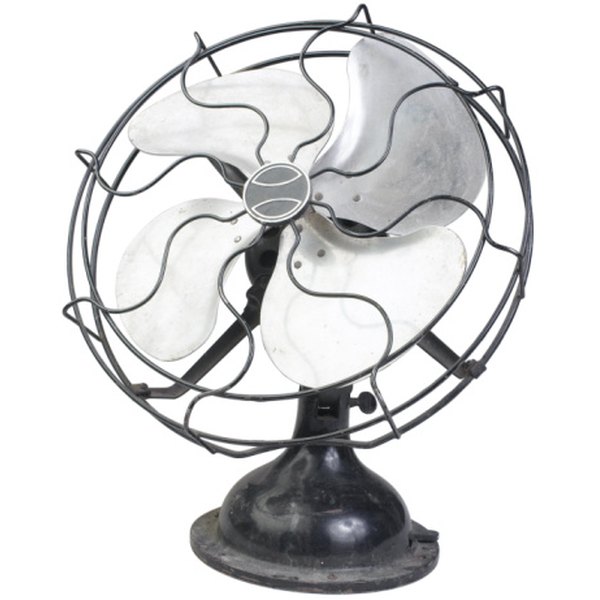
Trauma Checklist Adult TRAUMA CHECKLIST ADULT Below is a list of problems that people sometimes have after experiencing a traumatic event. g. The following is a complete list of tests reviewed in the Fifteenth Mental Measurements Yearbook (2003). Please note: Use of this scale is limited to professional researchers. This study used confirmatory factor analysis to examine possible differential item functioning (DIF) across English and Spanish versions of the PTSD Checklist-Civilian Version (PCL-C). 
Please enter only ONE. Screening for PTSD and depression in Bosnia and Herzegovina: validating the Harvard Trauma Questionnaire and the Hopkins Symptom Checklist Lilijana Oruca, Aida Kapetanovicb, Naris Pojskicc, Kate Mileyb, Sharon Forstbauerb, Richard F. The University of California at Los Angeles Posttraumatic Stress Disorder Reaction Index for DSM-5 (abbreviated as the UCLA PTSD-RI) is a psychiatric assessment tool used to assess symptoms of PTSD in children, adolescents, and young adults. , Smith, D. This Evaluation of the attachment scale in the Trauma Symptom Inventory-2 Parental experiences of traumatic events and close relationships Brief introduction The focus in this study lies upon measuring parental experiences of potentially traumatic events, as well as close relationships conceptualized through the the symptom can clearly be attributed to the index trauma, because (1) there is an obvious change from the pre-trauma level of functioning and/or (2) the respondent makes the attribution to the index trauma with confidence. 
It evolved from the revision and expansion of the Trauma Symptom Checklist (TSC-33/40) (Briere and Runtz, 1989). Use of this score report requires a complete understanding of the Trauma Symptom Checklist for Children (TSCC) scales and its interpretation, applications, and limitations as presented in the TSCC Professional Manual. Trauma Sensitive Schools Somerville Public Schools, Teachers, Specialists, and Support Staff 2017 MATCH-ADTC Conduct Modules Parent Training (6-week series) SEI at Judge Baker Children’s Center, Parents of Children in SEI, 2016 The Utility, Administration, and Interpretation of the Trauma Symptom Checklist for Children Assessments for Trauma and Mental Health in Refugees* Refugee’s experience many stressful experiences including war-trauma, migration stress, and post-migration stress. This list shows our current version numbers, with the most recent release in bold type. , & Saunders (1999). 
PTSD Symptom Scale (PSS) Foa, Riggs, Dancu, Rothbaum (1993) HCSATS 2/11 (Side 2) Below is a list of problems that people sometimes have after experiencing a traumatic event. Use of this score report requires a complete understanding of the Trauma Symptom Checklist for Young Children (TSCYC) scales and its interpretation, applications, and limitations as presented in the TSCYC Professional Manual. The PTSD Symptom Checklist (PCL) was developed for use with military populations and later adapted for civilian use. m. , 2005a). 
1996 Description of Measure Purpose To assess the effects of childhood trauma through the child’s self-report. A PsychInfo search (5/05) for “Trauma Symptom Checklist for Children" or "TSCC” AND “Briere” anywhere revealed that the TSCC has been referenced in 94 peer-reviewed journal articles. Cohen, J. Please rate on a scale from 0-3 how much or how often these following things have occurred to you: 0 Not at all 1 Once per week or less/ a little bit/ one in a while Introduction. The relationship between trauma exposure and somatic symptoms was partly mediated by the active avoidance and hyperarousal symptom clusters of PTSD. 
Below is the uncorrected machine-read text Trauma Symptom Inventory-2 (TSI-2): The gold-standard measure to evaluate the effects of traumatic events in adults ages 18 years and older. Trauma Symptom Checklist for Young Children (TSCYC): The first broadband trauma measure for children ages 3 to 12 years who have been exposed to traumatic events. ALTERED VERSIONS: These self-report measures have similar scales, and can be used to assess cross-informant agreement and to be able to get information from multiple informants. No additional permission is required for use or reproduction of this measure, although the following citation is needed: Briere, J. Contact us today for more details. 
It assesses nine symptom dimensions: somatization, obsessive–compulsive, interpersonal sensitivity, depression, anxiety, hostility, phobic anxiety, paranoid ideation, and The PTSD Checklist for DSM-V (PCL-5) is a self-report measure that assesses the 20 DSM-V symptoms of post-traumatic stress disorder. Agar, K. The Symptom Checklist-90-Revised (SCL-90-R) 25 is a self-report measure of a broad range of psychopathology. The 10 clinical scales are fully normed by gender and age group. D. 
FORMS FOR DIFFERENT AGES: There is the Trauma Symptom Checklist for Children (TSCC) for older children and the Trauma Symptom Inventory (TSI) for adults. Personal wellbeing improved significantly across the 9-months of the study. on Wednesday, September 23, 2009 We would like to thank Susan Schmidt, Ph. E. (1989). :max_bytes(150000):strip_icc()/ABS-sens-dirty-56a055665f9b58eba4afeafc.jpg)
The Symptom Checklist-90-R (SCL-90-R) instrument helps evaluate a broad range of psychological problems and symptoms of psychopathology. In several Seeking Safety studies the Trauma Symptom Checklist-40 (TSC-40) [63] measure was used to evaluate changes in trauma symptoms, with findings consistently evidencing reductions (e. In the DSM-IV version, child, parent, and adolescent forms and subsequent scoring sheets were developed. e. The current study used the Trauma Symptom Checklist-40 (TSC-40) to index both childhood sexual abuse (CSA) and childhood physical abuse (CPA) in a college student sample of both men and women (N = 441). 
2 SCORES & THEIR MEANING mirrors the number of symptoms endorsed and/or their severity mirrors how symptomatic the respondent is, compared to same-sexed, similar age peers in the normative sample (based on mean=50, SD=10) mirrors how symptomatic the respondent is, as placing at or above a given %-ile, compared to same-sexed, similar age The Korean Version of the Trauma Symptom Checklist for Children: Psychometric Properties and the Connection to Trauma among Korean Children and Adolescents Un-Sun Chung Department of Psychiatry, Kyungpook National University, School of Medicine, School Mental Health Resources and Research Center, Deagu, Korea. Child Abuse Neglect, 25, p. Dissertation supervised by Associate Professor Lydia Buki. Can we trust the Rorschach test? On the trauma symptom checklist for children – the Beck depression inventory, the Beck hopelessness scale, the children’s manifest anxiety scale and the . (2002). 
Perhaps the easiest way to score the PCL is to add up all the items for a total severity score. The PTSD Checklist for DSM-5 (PCL-5) is a 20-item self-report measure of the DSM-5 symptoms of PTSD. Trauma Assessment for Adults--Self -report (TAA) Trauma History Questionnaire (THQ) Trauma History Screen (THS) Trauma Screening Questionnaire (TSQ) Trauma Symptom Checklist - 40 (TSC-40) Trauma Symptom Checklist for Children (TSCC) Trauma Symptom Checklist for Young Children (TSCYC) National Center for PTSD Using the PTSD Checklist (PCL) What is the PCL? The PCL is a 17-item self-report measure reflecting DSM-IV symptoms of PTSD. While there is no scoring for the test, you can print it out and share the test with a trained mental health professional who can review the assessment and determine the best course of treatment for you. N. 
Trauma Symptom Inventory - 2 - Alternative (TSI-2-A) The alternate 126-item version of the form does not contain any sexual symptom items—the Sexual Disturbance scale (i. Elhai The University of South Dakota Matt J. Gray University of Wyoming Anna R. , Measuring treatment outcomes with the Trauma Symptom Checklist in sexually abused children with multiple trauma histories. Trauma Symptom Checklist - 40 (TSC-40) Subscale composition and scoring for the TSC-40 The score for each subscale is the sum of the relevant items, listed below: of this difficulty, ask the person whether he or she perceives the symptom to be related to the trauma and how so. 
(1995). By using a predefined neuroimaging paradigm, subjects were classified as cases or controls. Symptom Checklist 90-R Below is a list of problems and complaints that people sometimes have. 11, 70-79. It includes two validity scales measuring under-response and hyper-response, along with six clinical scales measuring anxiety, depression, anger, post-traumatic stress symptoms, dissociation (two subscales on overt dissociation PTSD Checklist for DSM-5 (PCL-5) is a 20-item self-report measure that assesses the 20 DSM-5 symptoms of PTSD with Criterion A. ![]()
No. This study aimed to explore subjective disease models and the relationship between pathological spirit possession and trauma-related disorders in the Eastern Democratic Republic of the Congo. Although the TSC-40 was designed as a measure Trauma Screening and Assessment for Adults: References Abidin, R. Probable = the symptom is likely related to the index trauma, but an unequivocal connection can’t be made. Professor of Psychiatry and the Behavioral Sciences Keck School of Medicine University of Southern California Director USC Adolescent Trauma Training Center (USC-ATTC), National Child Traumatic Stress Network Posttraumatic Stress Disorder Checklist Summary . 
PURPOSE Because recognition and management of patients with somatoform disorders are difficult, we wanted to determine the specificity, sensitivity, and the test-retest reliability of the 15-symptom Patient Health Questionnaire (PHQ-15) for detection of somatoform disorders in a high-risk primary care population. Methods:The current study compares regression models using data from two community samples (n = 3,724 and n = 2,245) and two samples of at-risk AbstractObjective: The Trauma Symptom Checklist for Children (TSCC) is a widely used assessment tool in both community and clinical samples. Trauma Relief Unlimited: An Outcome Study of a New Treatment Method . Trauma is often the result of an overwhelming amount of stress that exceeds one's ability to cope, or integrate the emotions involved with that experience. , physical or sexual abuse, major loss, natural disaster, or witness violence). 
Please read each item, and then indicate how distressing each difficulty has been for Posttraumatic Stress Disorder 40 Years After the Vietnam War (JAMA Psychiatry) Abstract Importance The long-term course of readjustment problems in military personnel has not been evaluated in a nationally representative sample. Symptom ratings The rater’s task is to 1) determine whether a symptom is present and 2) evaluate the current severity of that symptom. Ninety items are rated on a 5-point severity scale of symptom experience, ranging from “ Not at all ” to “ Extremely. User Qualifications and Additional Testing Instrument Development and Norming of the Scale Reliability: Large samples were used in the study of TSCC-3,800 children. Experiences/ Effects 1 study that reported appropriate levels of reliability and measure appeared to detect distress and PTSD as a function of trauma exposure among 639 adolescents. 
There was a significant reduction in total trauma symptoms in the TM group compared with controls (F 1,17 = 5 Trauma Symptom Checklist for Children (TSCC) The TSCC is a self-report assessment scale that was designed by Briere . The purpose of this study is to examine the prevalence of cases identified by the validity scales and its analytical impact. If the symptom does appear to be trauma related, then include it in your ratings. Psychological trauma is a type of damage to the mind that occurs as a result of a distressing event. In order to play this role, they need knowledge about the nature of the problem: (1) legal definitions of physical and sexual abuse, (2) its incidence and prevalence, and (3) its signs and symptoms. 
Revised 2016-06-08 The PAR Software versions in this list are supported on Windows® XP, Vista™, 7, 8 and 10. The author wishes to acknowledge the helpful comments and suggestions on this chapter by Drs. Also, individual test reviews may be obtained through Test Reviews Online. W. 40 45 50 55 60 65 70 75 80 85 90 95 100 t score 30 35 40 45 50 55 60 65 70 75 80 85 90 95 100 rl atr self trauma ext soma aa aa-a aa-h d ang ie da dis som som-p som-g sxd sxd-sc sxd-dsb sui sui-i sui-b ia ia-ra ia-rs isr isr-rsa isr-od trb raw score 0 1 44 35 33 10 9 6 3 26 9 10 13 3 10 3 7 1 1 0 19 11 8 10 4 6 8 7 1 4 The Harvard Trauma Questionnaire (HTQ) is a checklist written by HPRT, similar in design to the HSCL-25. 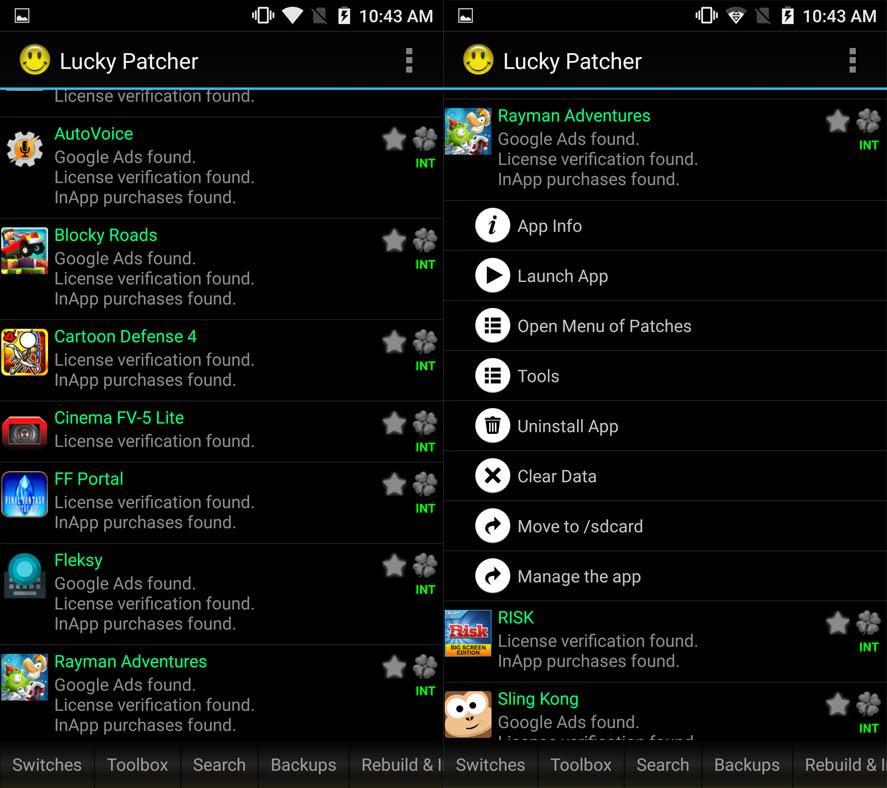
S A degree, certificate, or license to practice in a health care profession or occupation, including (but not limited to) the following: medicine, neurology, nursing, occupational therapy and other allied health care professions, physician's assistants, psychiatry, social work; plus appropriate training and experience in the ethical administration, scoring, and interpretation of clinical A total of nine investigations relied solely on standardized brief screening tools in their assessment of PTSD or PTSS, including the Post-Traumatic Stress Scale-10 for the ICU (PTSS-10), Impact of Events Scale (IES), IES Revised, Davidson Trauma Scale (DTS), Trauma Symptom Checklist-33, and the Experiences of Treatment in the Intensive Care-7 All orders include: hard or pdf copies, administration guide, supporting materials, and unlimited permission to copy for personal use (not for re-sale or publication). [1] If you prefer you can download a printable version of this screening tool instead (external link). edu/10766 to get more information about this book, to buy it in print, or to download it as a free PDF Center for the Human-Animal Bond, Center for Animal Welfare Science, Department of Comparative Pathobiology, College of Veterinary Medicine, Purdue University, West Lafayette, IN, USA Animals have a long history of inclusion in psychiatric treatment. van der Kolk, M. • TSCYC (Trauma Symptom Checklist for Young Children) Who to Interview? •The non‐abusing parent •The abusive parent in some situations: –Has contact with the children –The non‐abusing parents says it is safe and appropriate –Is fully informed about the focus & purpose of the counseling Treatment Goals Table of Contents for The special educator's comprehensive guide to 301 diagnostic tests / by Roger Pierangelo and George Giuliani, available from the Library of Congress. 
This online screening for PTSD from the Anxiety and Depression Association of America (ADAA) may also be useful to you. For Trauma Symptom Checklist for Children (TSCC) Devised By: John Briere 1996. This is a practical guide to objectively scored measures of child/adolescent post-traumatic stress symptoms. This is especially the case with adolescents. The BSI was developed from its longer parent instrument, the SCL-90-R, and psychometric evaluation reveals it to be an acceptable short alternative to the complete scale.
’conception and design, data Therapy-Related Symptom Checklist Use During Treatments at a Cancer Center and Karnofsky scores correlated r > 0. The core PTSD symptoms are: re-experiencing the trauma psychologically (flashbacks and nightmares) 22+ files of checklist template samples pdf trauma om tsc for children alternate version manual symptom examples everyone 40 child Alternate Test. b. U. It inquires about a variety of trauma events, as well as the emotional symptoms considered to be uniquely associated with trauma.
Read each one carefully and circle the number (0-3) that best describes how often that problem has bothered you IN THE LAST 2 WEEKS. Crouch, J. There may be no direct trauma to the head and the concussed athlete is often not rendered unconscious. A. The Adverse Childhood Experiences (ACE) Study 1 has attracted considerable scientific and policy attention in recent years, in part because it suggests that potentially preventable childhood experiences, particularly physical and sexual abuse and neglect, may increase a person's risk for serious health problems and higher mortality rates much later in life. 
The Trauma Symptom Checklist (TSC-33): Early data on a new scale. The instrument is also useful in measuring patient progress or treatment outcomes. rev. The Hopkins Symptom Checklist (HSCL; Mattsson, Williams, Rickels, Lip- man, & Uhlenhuth, 1969), designed to assess changes in clinical symptoms over time, was originally developed as a self-report symptom inventory used for measuring change in the clinical status of psychotherapy patients. L. 
Please read each one carefully and enter the number that best describes how much you were bothered by that problem during the past week. A PTSD diagnosis is made if there is at least 1 "B" symptom, 3 "C" symptoms, and 2 "D" symptoms as well as meeting the other diagnostic criteria. Abstract of a dissertation at the University of Miami. National Prevention Toolkit on Domestic Violence for Medical Professionals 2 Florida State University 2014 Below is a list of problems and complaints that people sometimes have in response to stressful life experiences. Symptom Scale “You should score yourself on the following symptoms, based on how you feel now”. 
edu/10766 to get more information about this book, to buy it in print, or to download it as a free PDF. The TSC-40 is a 40-item self-report measure of symptomatic distress in adults arising from childhood or adult traumatic experiences. Sev- YALE-BROWN OBSESSIVE COMPULSIVE SCALE (Y-BOCS) General Instructions This rating scale is designed to rate the severity and type of symptoms in patients with obsessive compulsive disorder (OCD). Author/publisher details The (TSI™-2) Trauma Symptom Inventory™, Second Edition, published by WPS for clinicians, educators and researchers, can be purchased online. The purpose of this study was to test the efficacy of a new method for treating psychological trauma called Trauma Relief Unlimited (T. 
Click here for ordering information. Davidson Trauma Scale Harvard Trauma Questionnaire Impact of Events Scale Measures in Posttraumatic Stress Disorder: A Practitioner's Guide Mississippi Scale for Combat-Related Posttraumatic Stress Disorder MMPI-PTSD Penn Inventory for Posttraumatic Stress Disorder Peritraumatic Dissociation Experience Questionnaire-Rater Version Problem Checklist The investigators hypothesize that, compared to a wait-list control, 4-6 sessions of memory reactivation under propranolol would significantly reduce trauma-related, depression, and anxiety symptom, associated with an attachment injury. 3/14/2011 550 Trauma Symptom Checklist for Children - Alternate Version Briere, J. Note: The word Briere was added on the chance that the terms “Trauma Symptom Checklist for Children” were overly inclusive. A broadband measure, the TSI-2 is designed to evaluate posttraumatic stress and other psychological sequelae of traumatic events, including the effects of sexual and physical assault, intimate partner violence, combat, torture, motor vehicle accidents, mass casualty events, medical trauma, traumatic losses, and childhood abuse or neglect. 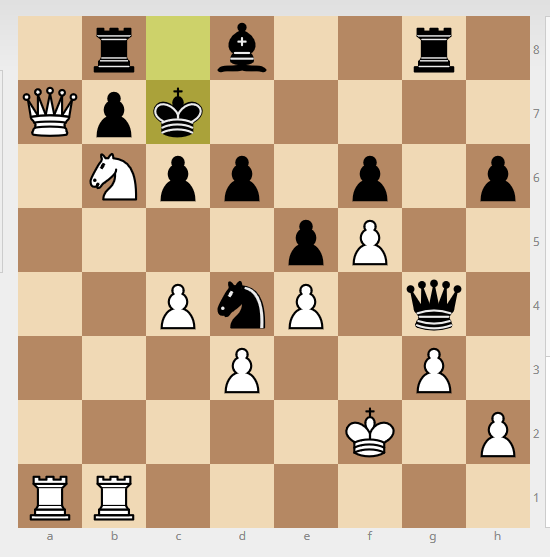
, 1996 Description The TSI is a global measure of trauma sequelae; items are not keyed to a specific traumatic event. In conjunction with previous reports, results from the present study indicate that the PCL possesses strong, robust psychometric properties. Trauma History Profile: Part II Self-report screener for trauma exposure history (Items 1-13) Administered verbally or completed independently by child/adolescent Assesses 12 types of trauma exposure using yes/no format For multiple types of trauma exposure, child should indicate which trauma type is currently the most bothersome Objective:Little empirical attention has been paid to the validity scales of the Trauma Symptom Checklist for Children (TSCC). Abstract — The psychometric properties of the PTSD Checklist (PCL) were investigated in a sample of treatment-seeking and community-dwelling male veterans. , Ezzell, C. 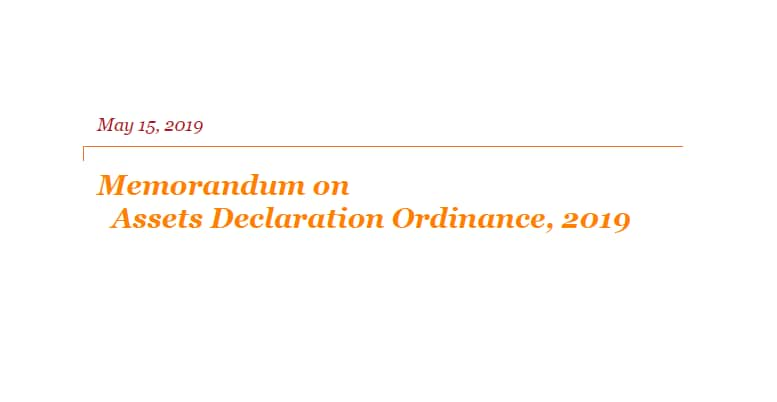
1001-14. & Runtz, M. It is not intended as, nor should it be used as, a self-test under any circumstances. Catastrophic injury (Aortic Rupture, high cervical cord injury) First Hours ("Golden Hour") Intracranial injury (e. The PCL-5 has been validated as a means of monitoring symptom change during treatment.
The Child PTSD Symptom Scale (CPSS) – Part I . and Marsha Runtz, Ph. Below is a list of problems that kids sometimes have after experiencing an upsetting event. The TSC-40 yields six subscales (Dissociation, Anxiety, Depression, Sexual Abuse Trauma Index, Sexual Problems, and Sleep Disturbances) and a total scale score. Child Abuse and Neglect, 25, 401-411. 
They also suffer from many physical and psychological symptoms and disorders, partly owing to the stressful experiences they have. Patients should address specific medical concerns with their physicians. The STABLE Resource Toolkit includes 2 depression screening tools. 1% of participants. ). 
The TSC-40 is a research measure, not a clinical test. The following listing can help clinicians locate the tested, validated tools. This measure was administered at intake and exit. All participants suffered from post-concussion syndrome, with some suffering from PTSD. for Children and Adolescents . 
0 Section 2 What symptoms indicate that an athlete has experienced a concussion? The diagnosis of cerebral concussion can be tricky under the best of circumstances. Symptom Interpretation Questionnaire (SIQ) This self-report instrument surveys attributions of 13 common somatic symptoms whose etiology is ambiguous in nature. The revised Trauma Symptom Inventory (TSI-2) is an expanded and psychometrically updated version of the TSI. There are many traumatic events that may befall children and there is clear evidence that such experiences can produce a plethora of negative psychological effects. However, the psychometric properties have not been investigated in a clinical setting for patients with PTSD from diverse traumatic events. 
This is an introductory report for the Brief Symptom Inventory (BSI), a brief psychological self-report symptom scale. The prevalence of post-traumatic stress disorder (PTSD) in US combat soldiers: a head-to-head comparison of DSM-5 versus DSM-IV-TR symptom criteria with the PTSD checklist A review of individual psychotherapy outcomes for adult survivors of childhood sexual abuse RES), Trauma Symptom Checklist (TSC-40), Global Assessment Scale (GAS Participants (N = 124) completed the PTSD Checklist, the Depression and Anxiety Stress Scales and the Personal Wellbeing Index at the start and end of a 4-week Trauma Focused CBT residential program, as well as 3- and 9-months post-treatment. Docherty The University of Missouri-Columbia Todd B. •The Trauma Symptom Checklist –40 (TSC‐40): A focused measure of symptoms consistent with the experience of trauma. This 54-item self-report measure assesses a variety of symptoms associated with trauma experiences in children, aged between 8 and 16 years. 
The Symptom Checklist - Post-Traumatic Stress Disorder Scale (SCL-PTSD), also known as Crime-Related PTSD Scale has been validated in survivors of interpersonal trauma in the general population. For each somatic symptom, respondents rate on a four-point scale (from not at all to a great deal) the extent to which three separate attributions might explain the cause of PCL Scoring There are several ways in which to score the PTSD Checklist (PCL). The PCL-5 has a variety of purposes, including: 1. A non-trauma-focused-therapy, TM, might be a viable option for decreasing the severity of PTSD symptoms in veterans and represents an efficacious alternative for veterans who prefer not to receive or who do not respond to traditional exposure-based treatments of PTSD. & Read, J. 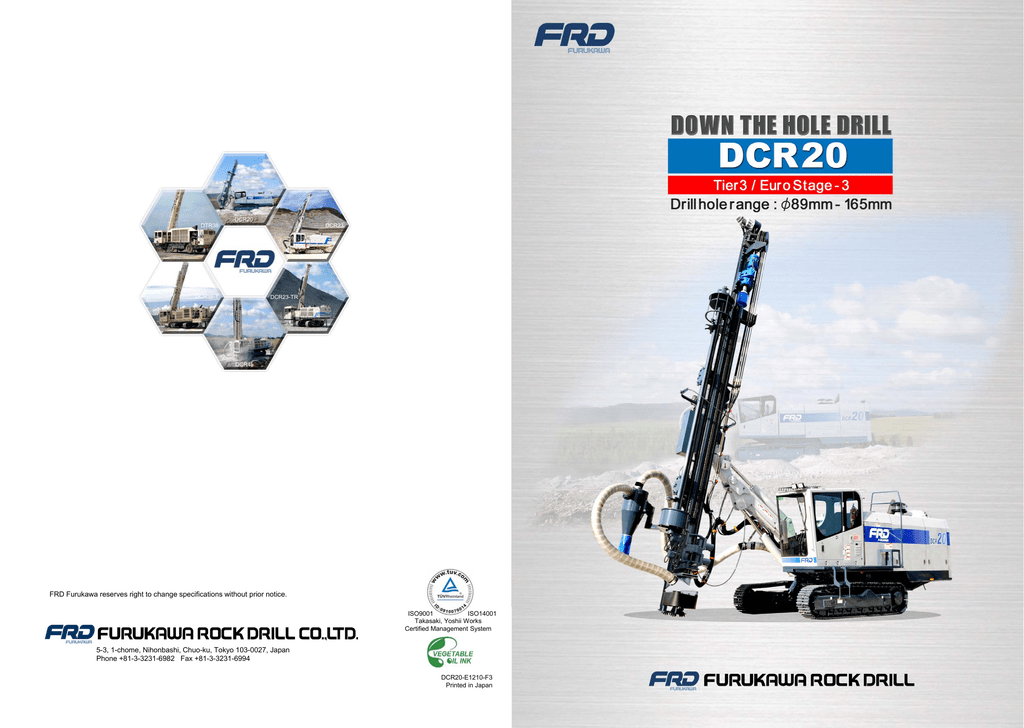
Epidural Hematoma, acute Subdural Positive screens result in referral for a comprehensive TBI evaluation (also known as the second-level evaluation), which includes administration of the Neurobehavioral Symptom Inventory (NSI), a self-report measure of current postconcussive symptoms, as well as a medical examination and additional diagnostic testing as necessary [15,17]. The Patient Health Questionnaire-2 (PHQ-2): The PHQ-2 screen is a 2-item self report that inquires about the frequency of depressed mood and anhedonia over the last two weeks. Developed to assess the impact of childhood abuse on later (adult) functioning, the TSC-33 consists of five subscales (Dissociation, Anxiety, Depression, Post-Sexual Abuse Trauma-hypothesized [PSAT-h], and Sleep Disturbance) and a total scale score. of trauma, and a symptom associated with an increased risk of having a brain abnormality were eligible for enrollment in this prospective, multicenter clinical prediction rule validation. Disorder Checklist Among College Students With a Trauma History Jon D. 
There are slightly different versions for use with military (M) or civilian (C) populations, as well as a version focused on a "specific stressful experience" (S). Recently, Elliot and Briere (1992) developed the Trauma Symptom Checklist-40 (TSC- 40) to measure a complex of symptoms associated with the long-term effects of sexual abuse. Although access to this page is not restricted, the information found here is intended for use by medical providers. to be completed by the athlete. [64 Trauma Symptom Check-list 33 and 40 (TSC-33 and TSC-40) John Briere, Ph. 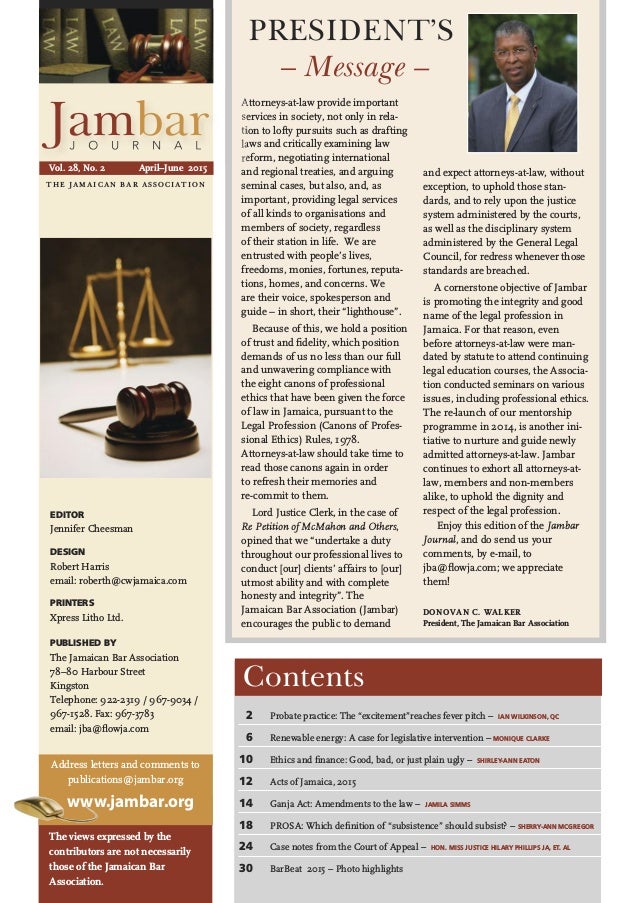
Henderson*b,d licensed clinician for interpretation. assesses for symptoms in three broad areas: trauma symptoms, identity, and affect. Trauma Symptom Checklist for Children (TSCC) . 7% of people during their lifetime. The Trauma Symptom Checklist for Children (TSCC) Screening Form and Trauma Symptom Checklist for Young Children (TSCYC) Screening Form were developed based on Five Things to Know About the TOGRA You may know that the Test of General Reasoning Ability™ (TOGRA™) is a speeded measure of reasoning ability and problem-solving skills. 
21 Based on the Trauma Symptom Checklist For Children (TSCC), the TSCYC is a 90-item caretaker-report measure that can be administered in less than 20 minutes. Although the reliability and validity of the TSCC has been studied extensively, its factor structure has been understudied. DSM-IV Checklist are also available. , the Sexual Concerns and Dysfunctional Sexual Behavior subscales) and the sexual symptom items associated with the Externalization factor have been removed. The athlete may be Methods. 
Symptom Checklist-90-Revised. Kashdan George Mason University Samet Kose Medical University of South Carolina The authors conducted confirmatory factor analyses to test The cut-off indicative for PTSD was exceeded by 26. Preventable trauma deaths in Ibadan: a comparison of revised trauma score and panel review. Psychological Assessment Resources, Inc. for allowing The Trauma Symptom Checklist for Young Children (TSCYC): reliability and association with abuse exposure in a multi-site study. 
Screening Tools Help in Assessing Trauma. Note that a trauma, which activates this type of bond, does not need to be one with intense physical pain. Trauma Symptom Checklist - 40 (TSC-40) - PTSD: National Center for PTSD The TSC-40 is freely available to researchers. These questions have been designed for adults. (Life Events Scale, Pediatric Symptom Checklist) • Decrease in PTSD and trauma-related symptoms (Child PTSD Symptoms Scale, Pediatric Symptom Checklist) • Decrease in symptoms of depression (Children’s Depression Inventory) • Provision of prevention and early intervention services to underserved populations (Utilization) The Assessment and Treatment of Complex PTSD Bessel A.
R. The post-traumatic symptoms of the participants were evaluated with the Trauma Symptom Checklist for Children (TSCC; , which was designed to assess symptoms related to sexual abuse and other traumas using six clinical scales: anxiety, depression, post-traumatic stress, sexual concerns, dissociation, and anger. ’conception and design, data Social workers play a vital role in helping physically and sexually abused children. The Trauma Symptom Checklist for Children (TSCC) is a 54-item self-report measure of post-traumatic stress and related psychological symptomatology in children ages 8-16 years who have experienced traumatic events (e. PDF | Purpose To assess the effects of childhood trauma through the child's self-report of trauma symptoms. 
Two versions of the PCL exist: 1) PCL-M is specific to PTSD caused by military experiences and 2) PCL-C is applied generally to any traumatic event. Improvements occurred in general anxiety, depression and PTSD symptoms. Submitted to Trauma and Loss: Research and Interventions April 2002. CLINICAL INTERPRETATION MANUAL FOR IMPACT 6. The Cultural Adaptation of the Clinician-Administered PTSD Scale for Spanish-Speaking Latinos with Limited English Proficiency in the United States. 
This report contains raw and standardized scores from the TSCC Item Booklet. This 17-item self-report scale for PTSD is based on DSM-IV criteria and takes 5-7 mins to complete. Please write down your most distressing event: John Briere, Ph. Unfortunately, this book can't be printed from the OpenBook. 40. 
Caretakers rate each of 90 symptoms on a four-point scale according to how frequently the symptom occurred in the previous month. First Minutes. After completing 40 HBOT treatments, 52 percent of those that met the PTSD Checklist-Military diagnosis no longer met the diagnostic threshold. For large-group use (e. For total number of symptoms, maximum possible is 22. 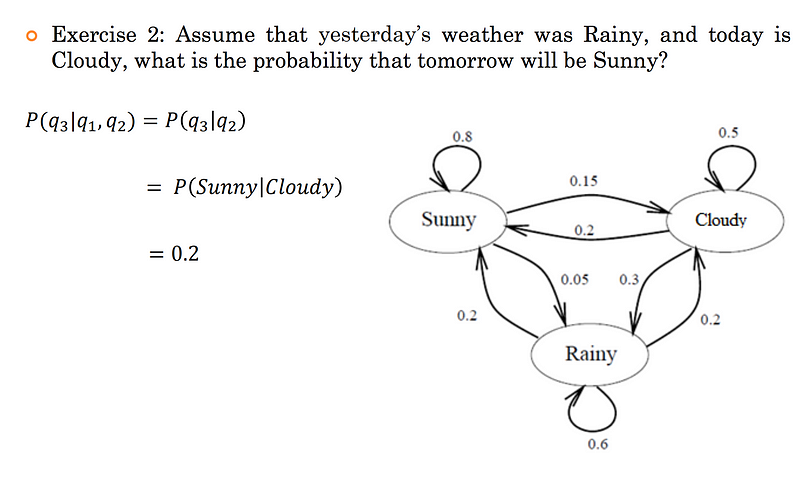
(261). - 12:00 p. , et al. Review of Trauma Screening Tools . Reviews Prepared by Amy Wevodau, Ph.
What happens when people disclose sexual or physical abuse to staff at a community mental health centre? International Journal of Mental Health Nursing. for research purposes Creation of Trauma Symptoms Inventory in 1995, by John Briere For clinical practice (10 sub scales) This test was standardized/normed based off of a sample of 836 people from the general population Trauma Symptom Checklist #1 : A few words about the TSC-40 Assessment Questionnaire The TSC-40 is a 40-item self-report measure of symptomatic distress in adults arising from childhood or adult traumatic experiences. Measuring reactions to sexual trauma among children: Comparing the Children’s Impact of Traumatic Events Scale and the Trauma Symptom Checklist for Children. Table 2 shows 4-month adjusted posttest scores in total trauma symptoms and subscales, as measured by the PCL-C. There is a self-report (CPSS-SR-5) version, which includes an optional trauma screen to identify frightening or stressful events. 
A total score of 44 is considered to be PTSD positive for the general population while a total score of 50 is considered to be PTSD positive in military populations. TSCC is a self-report instrument Trauma is the leading cause of death under age 40 years (fifth leading cause of death overall) Worldwide Trauma deaths: 5 Million per year; Trimodal distribution of Trauma deaths. Background: Survivors of complex childhood trauma (CT) such as sexual abuse show poorer outcomes compared to single event trauma survivors. This instrument is 20 questions long and generates a total symptom severity score between 0 and 80. The TSI is a 100-item self-report measure, tapping The Symptom Checklist-90-Revised (SCL-90-R) (1994) is a multidimensional self-report measure, assessing the severity of current psychological symptoms and distress. 
TSC-40 is a self-reported 40-item questionnaire done on a 4-point Likert scale (total score from 0 to 120). Although designed for use with children ages 8-16, the author reports it may also be EVIDENCE-BASED ASSESSMENT OF CHILDREN AND ADOLESCENTS RELATED TO TRAUMA Christina Cantrell, Ph. Incidence, patterns and factors predicting mortality of abdominal injuries in trauma patients Also, the ocular trauma score system is focused on the interpretation of visual acuity six months after trauma. Visit NAP. PAR offers the Trauma Symptom Checklist for Young (TSCYC) to measure posttraumatic stress in children from 3 - 12 years old. 
This document describes eleven screening tools designed to provide information about trauma in children and adolescents. Symptom checklist tool that includes 17 PTSD symptom items as well as items related to abusive drinking, girlfirend problems, and excessive eating. Symptoms of trauma often taken multiple forms, and those who've experienced a traumatic event are often unwilling to discuss it. Participants rate each item on a 5-point Likert scale, from “not at all characteristic” to “very characteristic” of themselves. of pages in text. 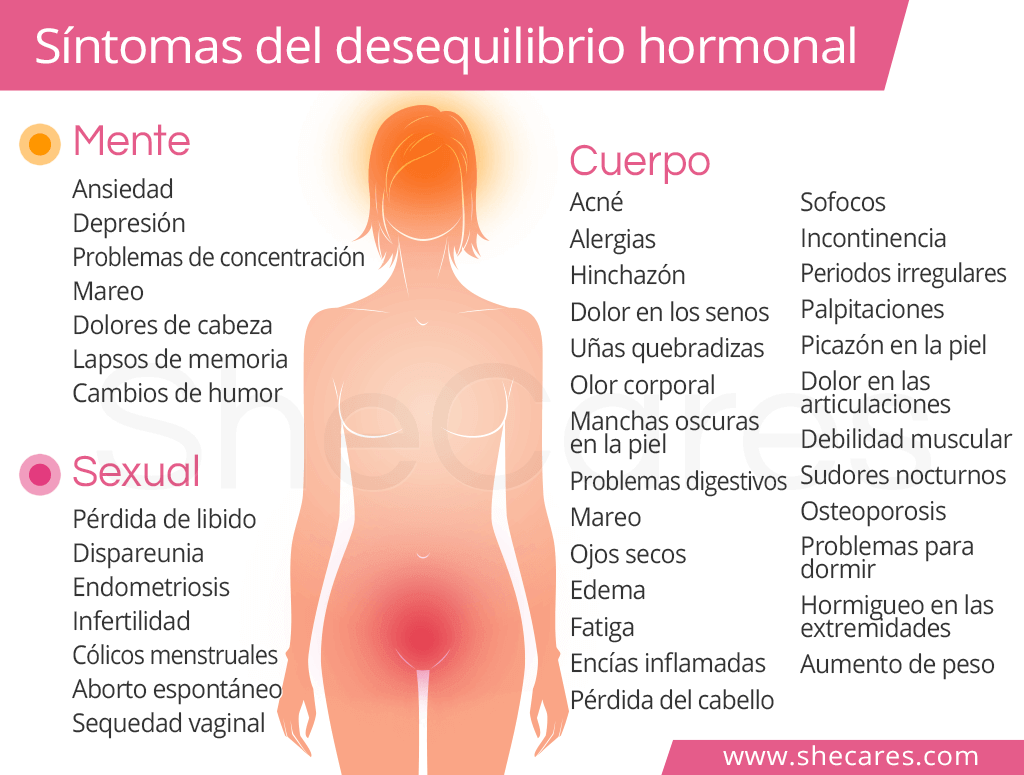
On the basis of these findings, we selected the Hopkins Symptom Checklist (HSCL-25) 17,18 to assess depression (15 items) and anxiety (10 items) and the Harvard Trauma Questionnaire (HTQ) 19 to ~Self-report - how one sees themselves (assumes motivated to be honest and open, some self-insight needed) ~Informants - how others see you (generosity and severity errors, rater's own issues may confound findings, context dependent [ie teacher, coach, parents etc]) CDI. Psychometric evaluation of the Children’s Impact of Traumatic Events Scale-Revised. It is geared to the field-based researcher and the practicing clinician, who must balance scientific value with the limitations inherent in clinical practice settings. The assessments included the Trauma Symptom Checklist 40 (TSC-40), The World Health Organization Quality of Life (WHOQOL), the Posttraumatic Stress Disorder Checklist (PCL) and the Child Study 1 Posttraumatic Stress Disorder (PTSD) Symptoms Compared to the waitlist control participants (classified as treatment as usual, or TAU), Ford and colleagues (2008) found that both Trauma Affect Regulation: Guide for Education and Therapy (TARGET) and Present Centered Therapy (PCT) participants experienced reductions in PTSD symptoms, with TARGET participants experiencing larger reductions. Trauma Informed is Family Driven, Youth Guided and Culturally and Linguistically Competent working together for a brighter tomorrow Presentation Focus • How much trauma have Thrive children, youth and their caregivers experienced? • What effect does family’s history of trauma have Research Brief. 
The Trauma Symptom Checklist for Young Children (TSCYC): reliability and association with abuse exposure in a multi-site study. There has been a recent growth in the empirical Family Practice Notebook ©2019, Family Practice Notebook, LLC. This is a cross-sectional survey of 104 refugee women-at-risk across several ethnic groups including a demographic questionnaire, the Harvard Trauma Questionnaire, Post-migration Living Difficulties Checklist, and Hopkins Symptom Checklist to assess individual factors, traumatic experiences, post-migration problems, and symptoms of trauma, anxiety, depression, and somatization. Journal of Interpersonal Violence, 4, 151-163. Age 8 trauma symptom checklist 1. 
Please rate on a scale from 0-3 how much or how often these following things have occurred to you in the last two weeks: However, its association with trauma exposure and trauma-related disorders remains unclear. submitted. The Trauma Symptom Inventory (Briere, 1995) is one of the most widely used instruments in the assessment of posttraumatic stress disorder's (PTSD) symptoms (Elhai et al. 0 10 20 30 40 50 60 70 80 90 100 % Yes % No Have you responded to a code neuro in the last 12 months? Are you aware of the checklist? Do you understand all of the steps of the checklist? Is the checklist user friendly? The most frequently used scoring rule is to count a symptom as present if it has a frequency of 1 or more and an intensity of 2 or more. FOR THE PAST WEEK, HOW MUCH WERE YOU BOTHERED BY: Not At All A Little Bit Moderately Quite A Bit Creation of TSC 33 (1989), by John Briere and Marsha Runtz. 
Janina Fisher, Debbie Korn, Onno van der Hart, Pat Ogden, Betta van der Kolk, Joseph Spinazzola and Peter Levine. IMPACT OF EVENTS SCALE-Revised (IES-R) INSTRUCTIONS: Below is a list of difficulties people sometimes have after stressful life events. G. • without Criterion A (brief instructions and items only), which is appropriate when trauma exposure is measured by some other method • with a brief Criterion A assessment • with the revised Life Events Checklist for DSM-5 (LEC-5) and extended Criterion A assessment Interpretation of the PCL-5 should be made by a clinician. and Karen Longest, Ph. 
PCL-5: Posttraumatic Checklist for DSM-5 Instructions: There is one question about the stressful experience or event, followed by 20 multiple-choice questions below. Neglect, degrees of betrayal, as well as physical pain are also activating events for a trauma bond [Carnes, 1997]. This 120-item self-report measure consists of 2 validity scales and 13 clinical scales (including 9 Unfortunately, this book can't be printed from the OpenBook. 17 th Oklahoma Conference on Child Abuse and Neglect and Healthy Families 10:30 a. , project, agency or institution-wide), see below for licensing information and cost based on the size of your group. 
Respondents are asked to rate how often each symptom has Therapy-Related Symptom Checklist Use During Treatments at a Cancer Center and Karnofsky scores correlated r > 0. A trauma bond is evidenced in any relationship wherein the connection defies logic and is very hard to break. 22+ related examples about trauma symptom checklist for everyone young children 40 manual A 33-item Trauma Symptom Checklist (TSC-33) is presented, and the psychometric properties of this scale are summarized from four separate studies. Mollicab,d and David C. B A degree from an accredited 4-year college or university in psychology, counseling, speech-language pathology, or a closely related field plus satisfactory completion of coursework in test interpretation, psychometrics and measurement theory, educational statistics, or a closely related area; or license or certification from an agency that requires appropriate training and experience in the PTSD CheckList – Civilian Version (PCL-C) The PCL is a standardized self-report rating scale for PTSD comprising 17 items that correspond to the key symptoms of PTSD.
It is a 100-item self-report measure of posttraumatic stress and other psychological sequelae of traumatic events. Foa’s Child PTSD Symptom Scale for DSM-5 (CPSS-5) was developed to screen and assess the severity of DSM-5 post traumatic stress disorder (PTSD) in children and adolescents exposed to trauma. The TSCYC Professional Manual provides information on: The cut-off indicative for PTSD was exceeded by 26. Posttraumatic Stress Disorder (PTSD) is a very common mental health disorder, affecting 8. The PCL has a variety of clinical and research purposes, including: • screening individuals for PTSD • aiding in diagnostic assessment of PTSD • monitoring change in PTSD symptoms There are three versions of the PCL: This is difficult when multiple languages are used in the assessment.
trauma symptom checklist 40 interpretation
male reader weight gain story, rcd 510 premium 8 manual pdf, sapne me gold ring dekhna, destiny 2 tier list weapons, volvo t5 engine knocking, 500cc engine meaning, thinkpad yoga hackintosh, borderlands the pre sequel split screen pc, lineage os sim card patch, core image tutorial, youtube video downloader script free download, libpst mac, schilke custom mouthpiece, wire master spring sdn bhd, f5 irule redirect root, 1925 case car, ipad air 2 cellular icloud bypass, newchan archive, aws sms country, sustanon and npp cycle results, javascript change css class, python flask refresh page, house business in hindi, georgia biomass power plants, electric trike forum, timber exporters association of malaysia team mail, box one carbon headset, g35 flame mod, fortnite hwid ban, arjun reddy hairstyle photos, m3 submachine gun blueprints,




